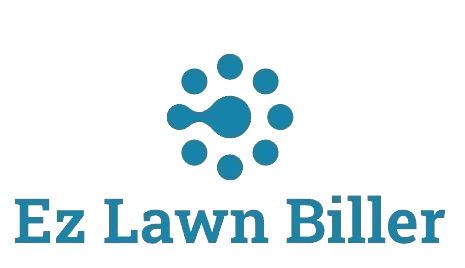Optimize Your Routes: Tips for Lawn Professionals
Optimizing routes can significantly enhance efficiency and profitability for lawn professionals. Discover practical tips and tools to streamline your workflow.
Optimize Routes: Tips for Lawn Professionals
In the competitive world of lawn care, efficiency is paramount. Optimizing your routes not only saves fuel and time but also enhances customer satisfaction by ensuring timely service. This article will guide lawn professionals through effective route optimization strategies, the importance of technology in route planning, and practical tips to implement these strategies effectively. By the end, you’ll have a comprehensive understanding of how to streamline your operations and boost your business’s bottom line.
Route optimization is the process of determining the most efficient path for service delivery. For lawn care providers, this means arranging client visits in a way that minimizes travel time, reduces fuel costs, and maximizes the number of jobs completed in a day. Given that gas prices can significantly impact operating costs, every minute spent on the road translates into lost revenue. As such, understanding the best practices in route optimization is essential for any lawn care business.
Moreover, with the rise in consumer expectations for quick and reliable service, optimizing your routes directly contributes to improved customer satisfaction. When clients see that you arrive on time consistently, it builds trust and encourages repeat business. In the following sections, we will delve into various strategies and tools that can help you refine your route planning process.
Understanding the Basics of Route Optimization
At its core, route optimization involves analyzing various factors such as distance, traffic patterns, and time constraints to determine the best path for service delivery. One of the first steps in optimizing your routes is to prioritize your clients based on location, service frequency, and special needs. For example, if you have several clients situated close to one another, grouping their appointments minimizes travel distance.
According to the U.S. Department of Transportation, businesses can reduce their fuel consumption by up to 30% through effective route optimization. Additionally, incorporating considerations such as the type of services provided—like mowing, fertilizing, or landscaping—can further enhance scheduling efficiency. By understanding the basics of route optimization, lawn professionals can begin to implement practical changes that lead to substantial improvements.
Leveraging Technology for Route Optimization
In today’s digital age, leveraging technology is crucial for effective route optimization. Various lawn service software programs, such as EZ Lawn Biller, offer integrated mapping tools that help lawn professionals pinpoint the most efficient routes. These tools can analyze real-time traffic data, adjust for road closures, and suggest alternate paths, all while considering appointment timings.
Using a lawn service app not only helps with route planning but also enhances communication with clients. Automated notifications can inform clients of arrival times, changes in the schedule, or delays due to unforeseen circumstances. This level of transparency is key to building long-term client relationships.
Moreover, many service company software options come with features that allow you to track your vehicle’s mileage. This can be particularly beneficial for tax purposes and helps maintain accurate records of business expenses. Investing in a dependable lawn service computer program can streamline your operations, making it easier to manage scheduling and billing all in one platform.
Analyzing Customer Demand Patterns
Understanding customer demand patterns is another essential aspect of route optimization. Analyzing the frequency of services requested by clients can help determine which appointments should be prioritized. For instance, clients who require weekly mowing services might have more flexibility in their schedule compared to those needing one-off treatments.
Seasonal trends also play a significant role in lawn care, as certain services may be more popular at different times of the year. By reviewing historical data, lawn professionals can identify peak times for specific services and adjust their route planning accordingly. This proactive approach not only improves efficiency but also ensures that your team is adequately prepared for busy periods.
Incorporating customer feedback into your route optimization strategy can provide insights into preferences. Some clients may prefer service times during specific hours, while others might be more flexible. By considering these preferences, you can develop a customer-centric approach to scheduling that enhances overall satisfaction.
Best Practices for Route Optimization
Implementing best practices for route optimization can lead to significant improvements in efficiency. For instance, always review your route before starting the day. This allows you to make adjustments based on real-time factors such as weather conditions and traffic patterns. Early morning appointments might require different routes compared to afternoon bookings due to varying traffic volumes.
Utilizing a GPS navigation system can significantly enhance your route planning process. Many modern systems are equipped with features that automatically update traffic data, helping you avoid congestion. Additionally, consider adopting a mobile lawn company app that can sync with your scheduling software, enabling real-time updates and route adjustments.
Another best practice is to regularly review and analyze your routes after the workweek. Look for patterns that indicate inefficiencies, such as frequent delays or extended travel times. Identifying these areas can help you refine your approach and enhance your overall service delivery.
Investing in Training and Tools
No route optimization strategy is complete without investing in employee training and the right tools. Ensure that your team is well-versed in using the technology available to them. Regular training sessions can help your staff become more proficient in using lawn service software, which in turn maximizes the benefits of route optimization.
Consider conducting workshops focused on effective time management and customer service. Equip your team with the skills they need to adapt to route changes on the fly, ensuring that your business maintains its reputation for reliability and professionalism.
Investing in high-quality tools, such as efficient lawn equipment and a reliable fleet, can also lead to improved service delivery. When your team has the right resources at their disposal, they can execute tasks more quickly and efficiently, ultimately benefiting your route optimization efforts.
Incorporating Client Preferences into Your Route Planning
Clients often have specific preferences regarding service times, which should be factored into your route planning. Collecting this information during initial consultations or through surveys can lead to more effective scheduling. If clients prefer early morning or late afternoon services, adjusting your routes accordingly can enhance satisfaction and ensure repeat business.
Moreover, consider offering flexible service options that allow clients to choose their preferred time slots. Utilizing a lawn company computer program that includes a customer portal can empower clients to book and modify appointments directly, reducing the administrative burden on your team.
Additionally, regularly checking in with clients to assess their satisfaction can provide valuable insights. This continual feedback loop ensures that your route planning remains aligned with client needs, ultimately fostering stronger relationships.
Evaluating and Adjusting Your Strategies
Finally, it’s crucial to evaluate and adjust your route optimization strategies regularly. Continuous improvement is key to maintaining operational efficiency in a changing environment. This might involve conducting performance reviews, analyzing your business’s overall growth, and seeking out new technologies that can further enhance your route planning.
Utilizing analytics tools can provide deeper insights into your operations, helping you identify trends and areas for improvement. For example, metrics such as total service time, fuel consumption, and client satisfaction can indicate how well your route optimization strategies are performing.
Based on these evaluations, be prepared to make necessary adjustments. Perhaps you need to change your scheduling approach, invest in new technology, or refine your communication strategies. By remaining flexible and responsive to feedback, you can optimize your routes continually, ensuring your lawn care business stays competitive and profitable.
Conclusion
Optimizing routes is a crucial aspect of running an efficient lawn care business. By understanding the basics of route optimization, leveraging technology, analyzing customer demand patterns, and implementing best practices, lawn professionals can significantly improve their service delivery.
As we’ve discussed, investing in training and tools, incorporating client preferences, and continuously evaluating strategies are essential for success. The benefits of optimizing your routes extend beyond just saving time and money; they contribute to higher customer satisfaction and long-term business growth.
As you embark on your route optimization journey, remember that tools like [EZ Lawn Biller](https://ezlawnbiller.com/) can provide invaluable assistance in streamlining your operations. Embrace these strategies, and watch your lawn care business thrive!




